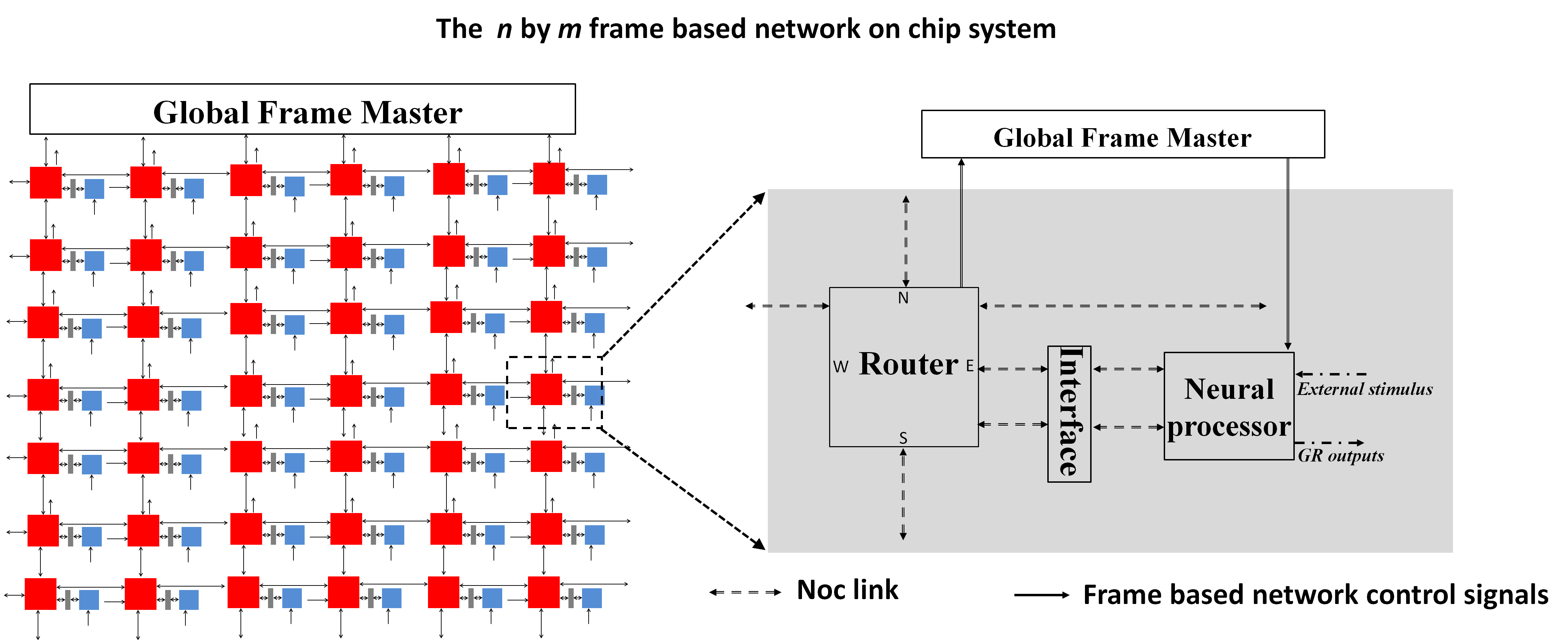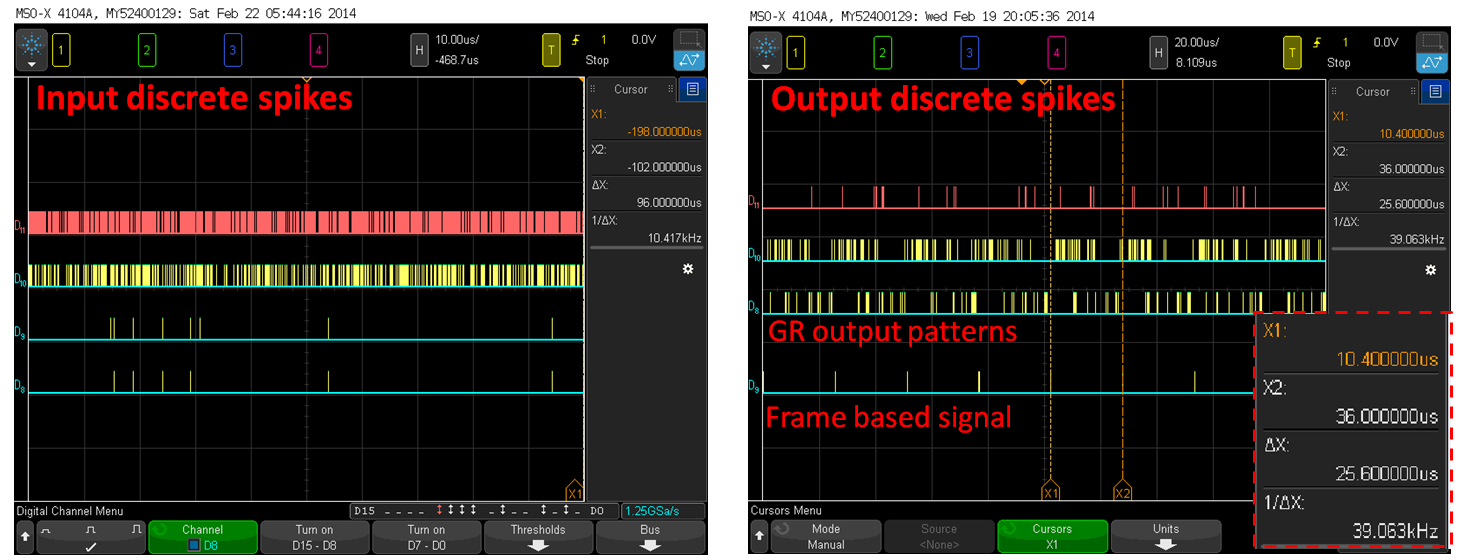| Members: | Dr. Chung Tin (MBE) - Principle Investigator
Dr. Eddie Ma (BMS) Prof. Ying Li (BMS) Prof. Stella W. Pang (EE) |
Cerebellum is a key brain region for adaptive motor coordination through the function of associative learning. Cerebellar dysfunction, consequent to stroke, cancer, and trauma, leads to ataxia, which still lacks a complete cure in the meantime. Artificial electronic device has emerged as a promising mean for restoring damaged neural function, with success demonstrated in deep brain stimulator and cochlear implant. An efficient cerebellum neuroprosthetic will serve significant application for clinical purpose as well as for fundamental neuroscience study. In particular, a self-calibrating neuroprosthesis will potentially be a powerful tool to adapt to the changing condition of the patients and normalize their motor function dynamically.

Left - Frame based field-programmable gate array (FPGA) network with n*m neural processors (48), n*m routers, and one global controller. This architecture can be scaled up depending upon on the required model. Right - Detailed structure of a module with neural processor, router, and frame master.

Real-time input/output discrete spikes and frame-based signal.